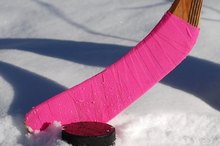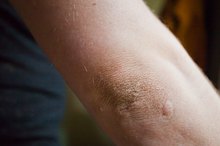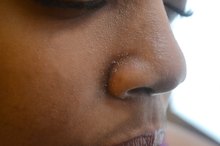What does fact checked mean?
At Healthfully, we strive to deliver objective content that is accurate and up-to-date. Our team periodically reviews articles in order to ensure content quality. The sources cited below consist of evidence from peer-reviewed journals, prominent medical organizations, academic associations, and government data.
The information contained on this site is for informational purposes only, and should not be used as a substitute for the advice of a professional health care provider. Please check with the appropriate physician regarding health questions and concerns. Although we strive to deliver accurate and up-to-date information, no guarantee to that effect is made.
How to Cover Stretch Marks with Self Tanner
Stretch marks are a skin condition technically known as striae. The marks appear as red, purple or white lines and typically develop on body parts where skin is most likely to grow quickly, such as the breasts, buttocks, thighs and stomach, reports the United States National Library of Medicine 1. Although stretch marks usually fade over time, you don’t have to just put up with them in the meantime. A self-tanning product will temporarily dye the surface of your skin, making your stretch marks less noticeable 2.
Wet your skin and apply approximately one handful of body scrub all over your body. Concentrate on scrubbing off any loose skin flakes around your stretch marks because the self-tanner will fade quicker on dry skin.
How to Heal Burned Skin From Glycolic Acid
Learn More
Rinse off the body scrub and dry your skin thoroughly with a towel. Apply a thin, even layer of body lotion all over your body, paying special attention to moisturizing your stretch marks so the self-tanner can penetrate the skin.
Put on plastic gloves to avoid staining your hands with excessive amounts of self-tanner. Add a quarter-sized amount of self-tanner to your palm and use your fingers to lightly smooth it onto your stretch marks.
How to Clean Puck Marks Off Goalie Equipment
Learn More
Let the self-tanner dry for 5 to 10 minutes, and then smooth self-tanner onto your entire body. Ensure you coat your stretch marks again; since they are a different texture from the rest of your skin, they will be less likely to retain color, so they require a second coat.
Remove your plastic gloves and apply self-tanner to your bare palms. Smooth the tanner quickly onto the backs of your hands and fingers, and then wash your palms with soap and warm water to remove the excess tanner. Avoid getting the backs of your hands soapy or overly wet as much as possible to prevent washing off the tanner you just applied.
Wait until the self-tanner has completely dried before getting dressed, or the tanner could rub off onto your clothing. The drying time may vary depending on the manufacturer. Add another lighter layer of self-tanner to your stretch marks if they still haven’t picked up enough color after drying.
Tips
Use tinted self-tanner products that show exactly where you’ve applied the product if you’re unsure of your application technique.
Moisturize daily to make the self-tanner stay on your skin for as long as possible, up to 10 days.
Warnings
Do not lay in the sun or in a tanning bed in an attempt to cover stretch marks. Stretch marks are actually scars and can’t change pigment like the rest of your skin.
Avoid using petroleum jelly to moisturize your stretch marks because it will form a barrier that prevents the self-tanner from coloring the area.
Related Articles
References
- United States National Library of Medicine: Striae
- Nemours Foundation: Making Stretch Marks Less Noticeable
- Farahnik B, Park K, Kroumpouzos G, Murase J. Striae gravidarum: Risk factors, prevention, and management. Int J Womens Dermatol. 2017;3(2):77-85. doi:10.1016/j.ijwd.2016.11.001
- Wollina U, Goldman A. Management of stretch marks (with a focus on striae rubrae). J Cutan Aesthet Surg. 2017;10(3):124-129. doi:10.4103/JCAS.JCAS_118_17
Tips
- Use tinted self-tanner products that show exactly where you’ve applied the product if you’re unsure of your application technique.
- Moisturize daily to make the self-tanner stay on your skin for as long as possible, up to 10 days.
Warnings
- Do not lay in the sun or in a tanning bed in an attempt to cover stretch marks. Stretch marks are actually scars and can’t change pigment like the rest of your skin.
- Avoid using petroleum jelly to moisturize your stretch marks because it will form a barrier that prevents the self-tanner from coloring the area.
Writer Bio
Allison Boelcke graduated from Indiana University with a bachelor's in English and a minor in psychology. She worked in print journalism for three years before deciding to pursue Internet writing. She is now a contributing web writer for Demand Studios and Conjecture Corporation.









